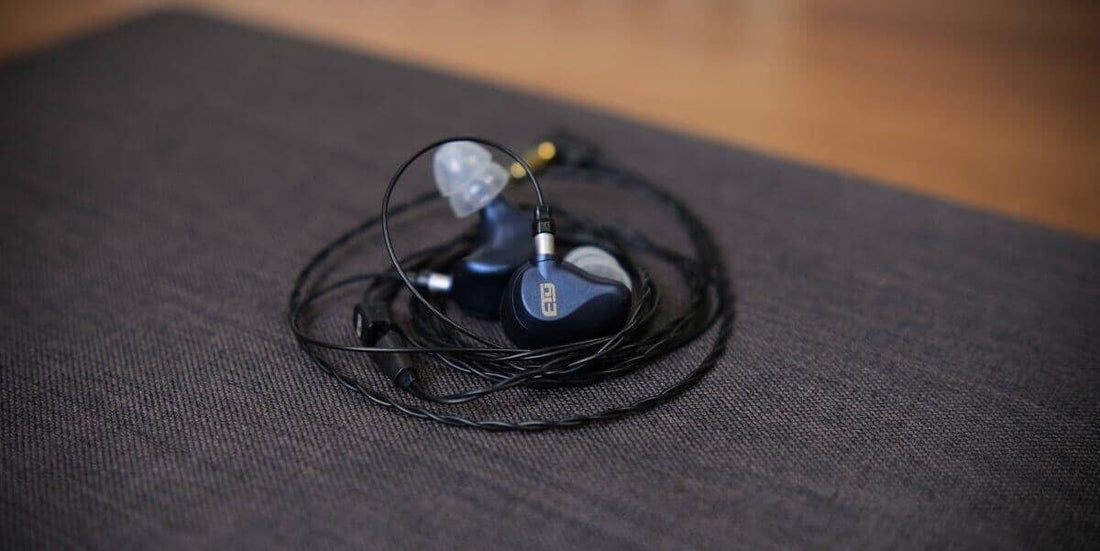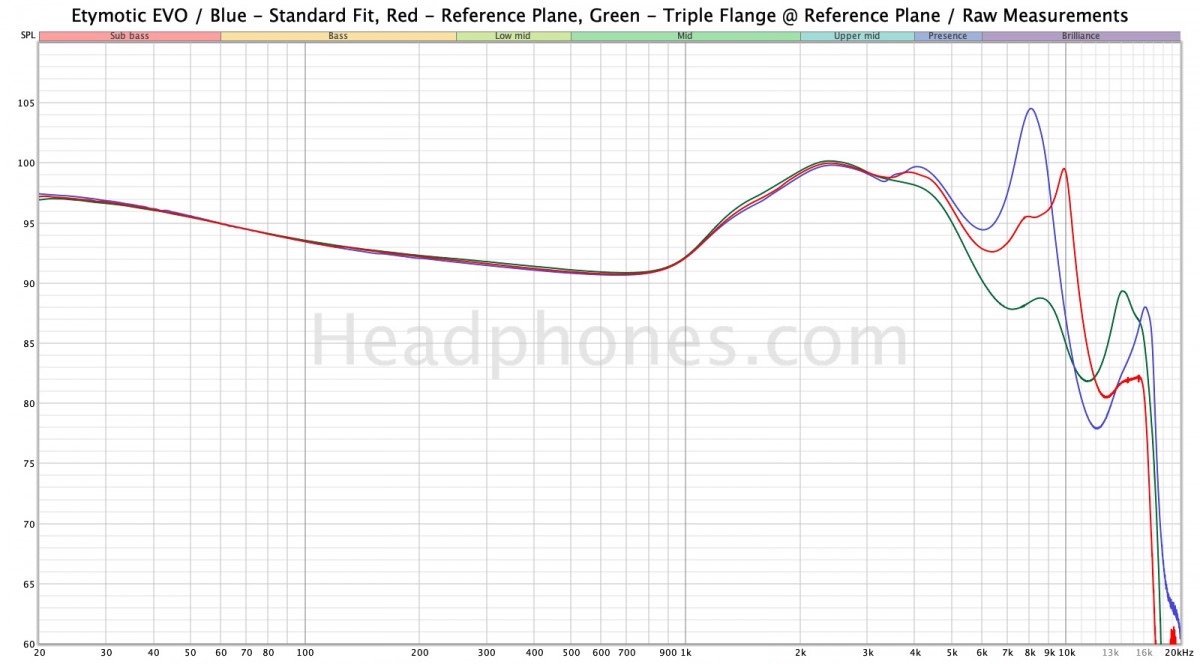Etymotic EVO Review - A Complete Evolution?

Review written by @Precogvision
Introduction
It’s often joked that Etymotic solved portable audio in 1991 with the release of their ER-4, the world’s first in-ear-monitor (IEM). Indeed, the ER-4’s subsequent iterations have remained mainstays in the audio world for years since, all of them touted for their strong price-to-performance ratio and for being the most technical single-BA IEMs on the market. Still, just as things were looking stagnant, Etymotic shook up the market again in February of 2019 with their ER2XR. The ER2XR has since gone on to dominate the sub-$200 market, setting a precedent so strong that most would argue it’s almost unfair.
I think you’re seeing a pattern here. Unlike a lot of manufacturers these days, Etymotic takes their sweet time with product development. That’s certainly commendable. But it also means that when they release something new, you can bet expectations are high. Here’s where the EVO comes in. Short for “Etymotic Evolution” (as was told to me by the person who named it), the EVO is a 3BA configuration that will set you back $499. Read on to find out whether the EVO lives up to its name.
This unit was provided on loan by Etymotic as part of a Head-Fi tour. At the end of the review period, it will be returned. As always, what follows are my honest thoughts and opinions to the best of my ability.
Source & Drivability
Critical listening was done off of a variety of sources including my iBasso DX160, iBasso DX300, and iPhone X with lossless files. Unlike most BA IEMs, the EVO takes some juice to drive to sufficient listening levels. Still, I had no trouble running it off of any of my sources and this means you shouldn’t expect any hissing.
The Tangibles
As what I received was a tour unit, what I show here should not necessarily be considered representative of what actual buyers will receive. For example, the production units should include both double and triple flange tips.
The EVO is constructed of injection-molded stainless steel - blasted dark blue - for a weighty, rugged build. This is quite the departure from the lightweight aluminum (or plastic) used in past Etymotic IEMs. Past the nozzle, it eschews the cylindrical design of Etymotic’s other IEMs, taking on a more traditional shape. The presence of clear L/R indicators is a nice added touch, as this could be confusing on the classic design. Given the way the EVO is shaped, of course, I think most people will know which side is which. You’ll want to get a deep fit with these IEMs, otherwise the weight will pull them out of your ear. Personally, I had no issues with comfort, and if you’ve worn an Etymotic IEM in the past, then I think the EVO’s fit will be familiar territory.
Let’s talk about the included cable. Most readers will know my stance on cables: I don’t care about them. But I feel compelled to sound the alarm here as, at this point in time, I cannot think of a worse cable I have come across. The EVO’s cable is spiderweb levels of thin, tangles to no end, and the juxtaposition to the otherwise substantially heavier EVO is nothing short of perplexing. To the point of that last part, it frequently undrapes from behind the ear due to how lightweight it is, and it provides zero support for the IEMs. Did I also mention the cable’s connectors are uncommon T2 ones, so any swaps with cables you already have on-hand are probably out the window? I genuinely question how this cable made it into production.

Sound Analysis
The measurements shown below were taken off of an IEC-711 coupler. I took several measurements. One with the 8kHz resonance peak for consistency using included double flange tips, one pushed as close to the reference plane as possible (the 10kHz resonance peak measurement) using included double flange tips, and one with triple flange tips flush with the reference plane. Measurements should not be considered accurate after 10kHz. As usual, I don’t think there’s one “true” measurement; in reality, you can expect the EVO to fall somewhere between them.

Overall, the EVO doesn’t stray far from the familiar Etymotic sound. Bass on the EVO sits between the ER4XR and ER2XR in terms of quantity. It injects some warmth into the low-end, and I’d characterize it as being on the better end of BA bass. It’s tight, clean, and seems to have a tad more texture than your average BA monitor. At the end of the day though, it’s just BA bass. It doesn’t slam properly, decay is truncated, and I would’ve preferred more quantity. Listeners seeking to scratch that itch need to look elsewhere, but if you just need your bass to be present, then I think the EVO will work.
I’m sure many will be familiar with the classic formula being used for the midrange. Note-weight is skewed thinner for a more upfront presentation that emphasizes a high degree of vocal intelligibility. This is not the IEM you’ll want if you’re looking for rich, warm vocals, but if you desire a leaner, reference-y presentation, the EVO has you covered. Interestingly, I’ve never really heard the upper-midrange tilt on Etymotic’s other IEMs, but I notice it on the EVO. The EVO also has quite a lot of “grit” to its note decay; this quality is not uncommon to these types of reference BA IEMs. While it’s not my cup of tea, I know many listeners who enjoy this quality, so I’ll let readers decide whether that’s a good or bad thing.
Unfortunately, the treble is where the EVO stumbles. I wouldn’t really trust the graphs in this instance, as the EVO will probably sit differently in your ear than it does in the coupler. What I hear running sine sweeps by ear also goes against what the measurements depict. I observed some energy at ~7kHz, followed by a strong peak at 9kHz (the 8kHz peak shown on the graph is barely noticeable for me). Post-9kHz, the EVO rolls off fairly strongly. I want to say the treble comes back up at ~15kHz, similar to the tube resonance I can hear on the ER2XR, but not strongly enough to present itself entirely in practice. And speaking of practice, what you have here is a treble response that doesn’t impress me very much. It’s slightly abrasive - thanks equal parts to the 9kHz peak and to the aforementioned grit - and there’s a general lack of air. As a whole, the EVO’s treble response is decidedly not an “evolution” from its predecessors which had smoother, albeit equally rolled-off treble.

Technical Performance
The EVO is a strong technical performer; the best I’ve heard out of the Etymotic lineup. But this also should come as no surprise given the EVO is rocking three BA drivers as opposed to the single driver that tokens their other IEMs. As befits the EVO’s reference monitor roots, notes are articulated sharply without noticeable blunting to my ears. You do, of course, have that stereotypical, plasticky BA timbre, where notes lack a sense of body.
Imaging is an oft-cited weakness of the Etymotic IEMs. The EVO has gone from decidedly poor to average in this department. I don’t think it sounds as narrow in terms of soundstage width as previous Etymotics; however, it maintains most of the collapsed center image - by extension, lack of soundstage depth - that plagues the ER3XR and ER4XR. For dynamics, the EVO is also a small step forward. Quiet-to-loud swings exhibit slightly better contrast than from my memory of the ER4XR. I do find micro-dynamics to be surprisingly alive on the EVO, particularly in the midrange. Indeed, I think what pleases me most about the EVO is that it's a more raw, energetic expression of Etymotic's usual sound.

Select Comparisons
So where does the EVO sit in the Etymotic line-up, and is it truly better than its predecessors? I think the answer is more nuanced than a simple "yes" or "no". In my opinion, the ER3XR and ER4XR have the EVO beat for raw tuning (after all, they’re tuned exactly the same); they nail that “reference” monitor sound better. But the EVO pulls ahead in terms of technical performance. It improves marginally on those IEMs’ oft-cited weaknesses and, in general, sets a solid precedent. The ER2XR is the real wild-card. You can’t really compare the two head-to-head, but I have to admit: I prefer the ER2XR. Notes lean smoother on the ER2XR (zero BA timbre), the bass response is in another league, and the treble response is smoother if not dark. Of course, the EVO is a solid step ahead in the detail department.
An interesting alternative to the EVO would be the Prisma Audio Azul. Because Etymotic still does not have an IEM in their lineup with good treble extension, the Azul presents an apt foil. The EVO has a slightly more colored, warmer sound thanks to more bass and a lack of air. It's worth noting that, by comparison, the Azul might have too much air for some listeners, but I think the Azul better nails that "reference" monitor sound. Neither has particularly good imaging, although the EVO probably has a small edge in that department and for detail in general.

The Verdict
Admittedly, I find it difficult to assess the EVO outside the realm of the very strong expectations that Etymotic has set for themselves. In this vein, I’d be lying if I said that I thought the EVO was necessarily a full-on “evolution” from its predecessors. But I do think the EVO’s a pretty good IEM overall, one that has a place amidst the highly-competitive $500 market. Most readers will know that I generally base my recommendations entirely off of sonic performance. As a testament to just how bad I think the cable is though, if Etymotic could replace it with something actually usable, I probably wouldn't mind recommending the EVO.
-Precogvision
Check out the video review here:
---
Discuss the Etymotic Evo on the HEADPHONE Community Forum Here.
---
